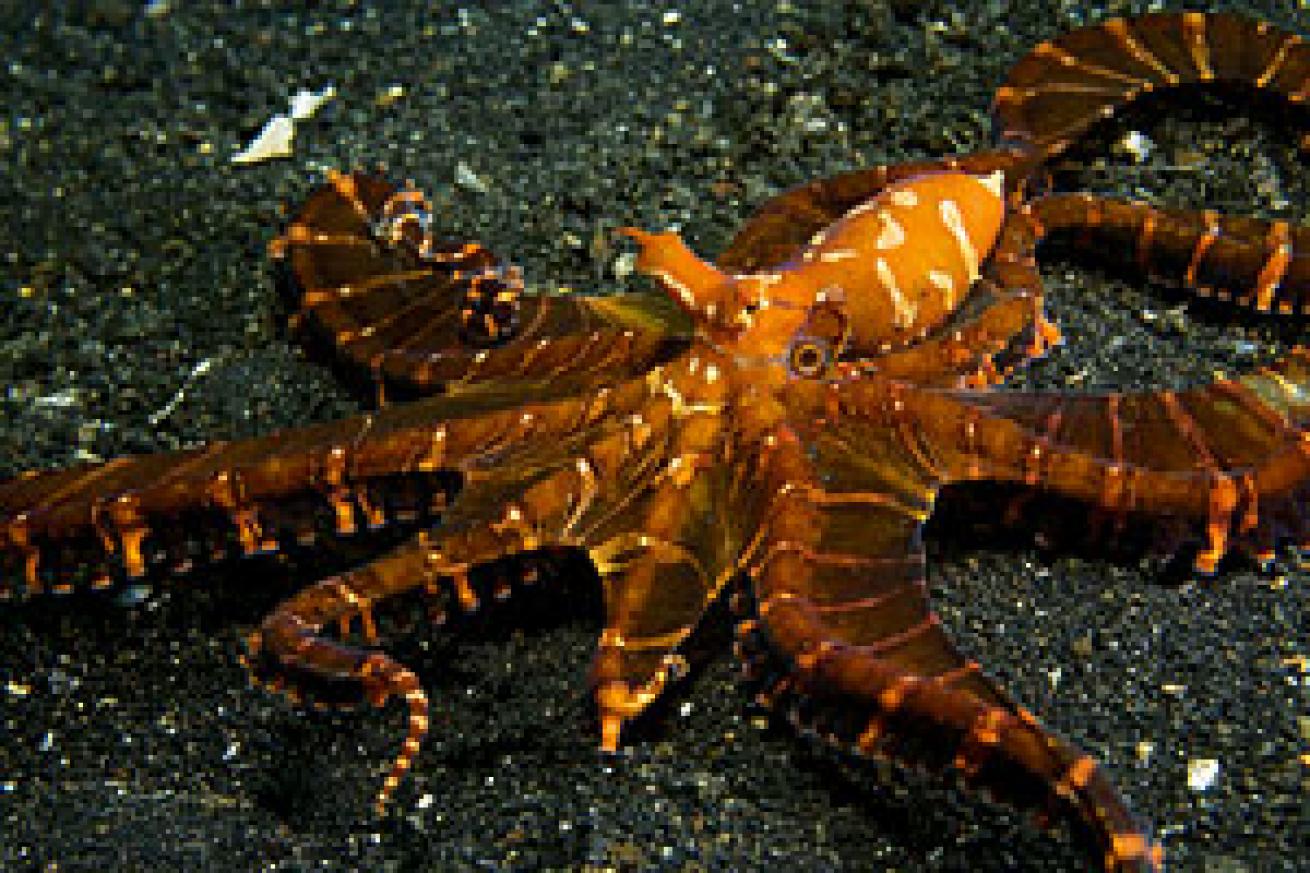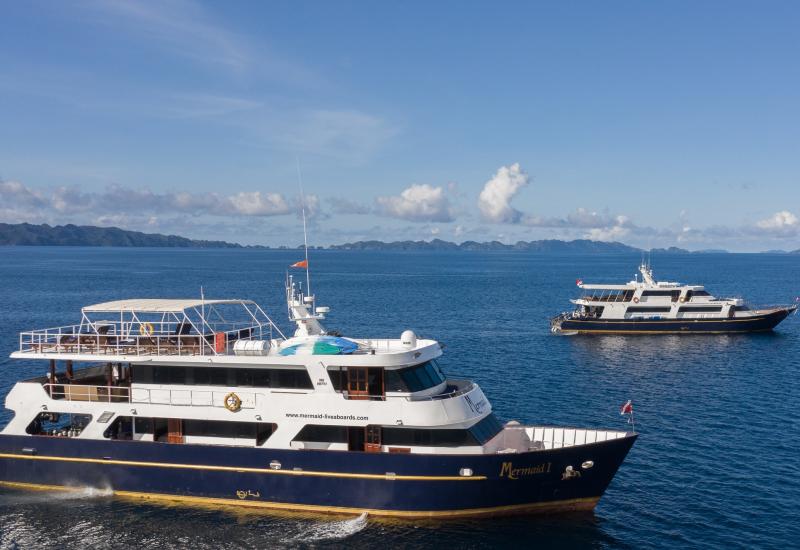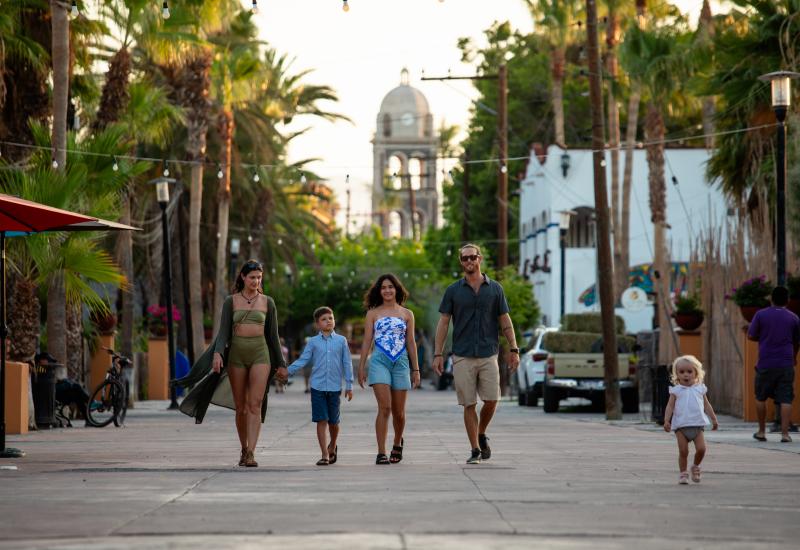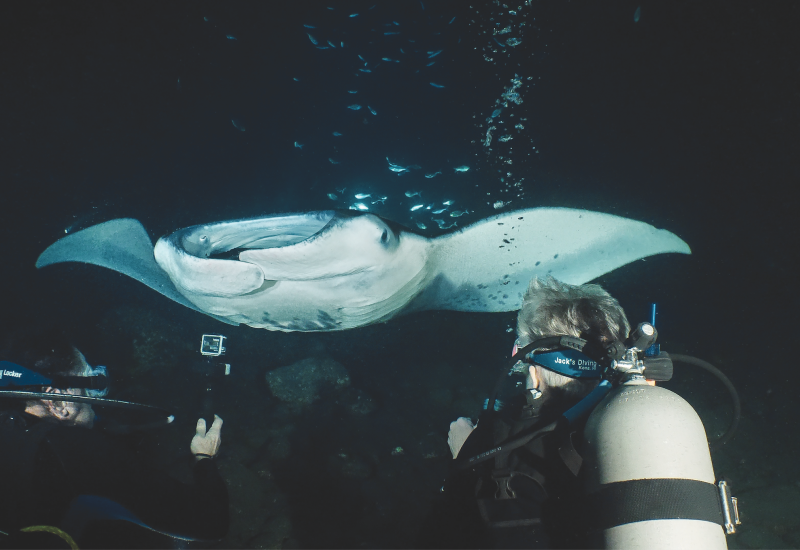Cracking the Coral Triangle

By Travis Marshall
Photo by Stephen Frink
Why dive here?
You want Technicolor soft-coral reefs? You got 'em. Plunging walls? Those too. Not to mention world-class muck dives, big animal encounters, wrecks, shark dives and screaming drifts against a backdrop so diverse and undiscovered that as many as 20 new marine-life species are discovered here each year, says Lida Pet Soede, head of the Coral Triangle program for World Wildlife Fund Indonesia. "The weird areas--the muck, sand flats and mangrove forests--are where most of these new species are being found, the freaky animals that are really beautiful for underwater photographers." But because the land-based communities within the Coral Triangle are largely undeveloped, environmental damage is becoming a problem. "Bomb and cyanide fishing, overfishing, pollution and bad infrastructure have really damaged some of these reefs," Soede says. "But recreational divers can be a positive influence here by bringing money to local communities from sources other than fishing. And to make sure they aren't contributing to the problem, divers should make sure they use environmentally conscious operators."
What is it?
A 2.3-million-square-mile swath of Pacific Ocean encompassing the most biologically diverse marine environment in the world, and more up-and-coming world-class diving hot spots than you can shake a fin at. Inhabitants: More than 500 coral species--75 percent of all known species worldwide; at least 3,000 species of fish, including migratory whale sharks--the world's biggest--and coelacanths--one of the world's oldest that pre-dates the dinosaurs; vital whale and dolphin habitats; and active nesting grounds for six of the world's seven species of sea turtles.
Where in the world?
The name "Coral Triangle" is generally attributed to a group of scientists from the University of British Columbia, says Soede of World Wildlife Fund Indonesia, who were the first to use the term to describe this region, which has long been known for its unprecedented marine biodiversity. The official borders fluctuate as new areas are explored, but today they are roughly formed by the Philippines in the north, Bali, Indonesia, in the west and the Solomon Islands in the east. Within the Coral Triangle's borders are at least some part of the coastal areas of Indonesia, Malaysia, Papua New Guinea, Philippines, Solomon Islands and Timor-Leste.
Who to dive/travel with?
Tourism Boards: Philippines, experiencephilippines.ph; Malaysia, tourism.gov.my; Papua New Guinea, pngtourism.org.pg; Indonesia, indonesia-tourism.com; Solomon Islands, visitsolomons.com.sb; Timor-Leste, turismotimorleste.com/en
Dive Travel Agents: Caradonna Dive Adventures, caradonna.com; Reef and Rainforest, reefrainforest.com; South Pacific Island Travel, spislandtravel.com.
Live-Aboards/Operators: A number of live-aboards and dive operators offer itineraries to the countries, islands and areas that make up the Pacific Ocean's Coral Triangle. To get you started, here's a partial listing of those operators, by region or destination:
North Sulawesi, Indonesia Paradise Dancer, peterhughes.com; North Sulawesi Aggressor, aggressor.com; Siam Dive n' Sail, indodivers.com; Ocean Rover, oceanrover.com; Murex Live-aboards, manado-liveaboards.com. For a listing of land-based resorts, divenorthsulawesi.com.
Raja Ampat, Indonesia Paradise Dancer, peterhughes.com; Dive The World Live-aboards, divetheworldindonesia.com; Siam Dive n' Sail, indodivers.com; Ocean Rover, oceanrover.com; Misool Eco Resort, misoolecoresort.com; Kri Eco Resort and Sorido Bay Resort, papua-diving.com.
Wakatobi, Indonesia Wakatobi Dive Resort and Pelagian, wakatobi.com and pelagian.wakatobi.com; Siam Dive n' Sail, indodivers.com.
Komodo and Bali, Indonesia Komodo Dancer, peterhughes.com; Komodo Live-aboards, komodo-liveaboards.com; Dive The World Live-aboards, divetheworldindonesia.com; Siam Dive n' Sail, indodivers.com; Mermaid Live-aboards, mermaid-liveaboards.com.
Papua New Guinea Star Dancer peterhughes.com; MV Telita, telitadive.com; Golden Dawn, mvgoldendawn.com; Spirit of Niugini, spiritofniugini.com; MV Chertan, chertan.com; Tawali Resort, tawali.com; Tufi Dive Resort, tufidive.com; Walindi Plantation Resort/ FeBrina; walindi.com.
Solomon Islands Spirit of Solomons and Bilikiki, bilikiki.com; Uepi Island Resort, uepi.com; Yandina Plantation Resort, yandinaresort.com.sb.
Philippines Expedition Fleet Live-aboards, expeditionfleet.com. For a listing of land-based resorts, divephil.com/resorts.html.
When to go?
The southern part of the triangle--Papua New Guinea, Indonesia, Timor Leste and the Solomons--is generally best for diving from May to November. And the Philippines are best from November to May because June to September is typhoon season in the northern part of the triangle. But the best times to dive vary from island to island, so check with local dive operators about seasonal recommendations and annual attractions.

By Travis Marshall
Photo by Stephen Frink
Why dive here?
You want Technicolor soft-coral reefs? You got 'em. Plunging walls? Those too. Not to mention world-class muck dives, big animal encounters, wrecks, shark dives and screaming drifts against a backdrop so diverse and undiscovered that as many as 20 new marine-life species are discovered here each year, says Lida Pet Soede, head of the Coral Triangle program for World Wildlife Fund Indonesia. "The weird areas--the muck, sand flats and mangrove forests--are where most of these new species are being found, the freaky animals that are really beautiful for underwater photographers." But because the land-based communities within the Coral Triangle are largely undeveloped, environmental damage is becoming a problem. "Bomb and cyanide fishing, overfishing, pollution and bad infrastructure have really damaged some of these reefs," Soede says. "But recreational divers can be a positive influence here by bringing money to local communities from sources other than fishing. And to make sure they aren't contributing to the problem, divers should make sure they use environmentally conscious operators."
What is it?
A 2.3-million-square-mile swath of Pacific Ocean encompassing the most biologically diverse marine environment in the world, and more up-and-coming world-class diving hot spots than you can shake a fin at. Inhabitants: More than 500 coral species--75 percent of all known species worldwide; at least 3,000 species of fish, including migratory whale sharks--the world's biggest--and coelacanths--one of the world's oldest that pre-dates the dinosaurs; vital whale and dolphin habitats; and active nesting grounds for six of the world's seven species of sea turtles.
Where in the world?
The name "Coral Triangle" is generally attributed to a group of scientists from the University of British Columbia, says Soede of World Wildlife Fund Indonesia, who were the first to use the term to describe this region, which has long been known for its unprecedented marine biodiversity. The official borders fluctuate as new areas are explored, but today they are roughly formed by the Philippines in the north, Bali, Indonesia, in the west and the Solomon Islands in the east. Within the Coral Triangle's borders are at least some part of the coastal areas of Indonesia, Malaysia, Papua New Guinea, Philippines, Solomon Islands and Timor-Leste.
Who to dive/travel with?
Tourism Boards: Philippines, experiencephilippines.ph; Malaysia, tourism.gov.my; Papua New Guinea, pngtourism.org.pg; Indonesia, indonesia-tourism.com; Solomon Islands, visitsolomons.com.sb; Timor-Leste, turismotimorleste.com/en
Dive Travel Agents: Caradonna Dive Adventures, caradonna.com; Reef and Rainforest, reefrainforest.com; South Pacific Island Travel, spislandtravel.com.
Live-Aboards/Operators: A number of live-aboards and dive operators offer itineraries to the countries, islands and areas that make up the Pacific Ocean's Coral Triangle. To get you started, here's a partial listing of those operators, by region or destination:
North Sulawesi, Indonesia Paradise Dancer, peterhughes.com; North Sulawesi Aggressor, aggressor.com; Siam Dive n' Sail, indodivers.com; Ocean Rover, oceanrover.com; Murex Live-aboards, manado-liveaboards.com. For a listing of land-based resorts, divenorthsulawesi.com.
Raja Ampat, Indonesia Paradise Dancer, peterhughes.com; Dive The World Live-aboards, divetheworldindonesia.com; Siam Dive n' Sail, indodivers.com; Ocean Rover, oceanrover.com; Misool Eco Resort, misoolecoresort.com; Kri Eco Resort and Sorido Bay Resort, papua-diving.com.
Wakatobi, Indonesia Wakatobi Dive Resort and Pelagian, wakatobi.com and pelagian.wakatobi.com; Siam Dive n' Sail, indodivers.com.
Komodo and Bali, Indonesia Komodo Dancer, peterhughes.com; Komodo Live-aboards, komodo-liveaboards.com; Dive The World Live-aboards, divetheworldindonesia.com; Siam Dive n' Sail, indodivers.com; Mermaid Live-aboards, mermaid-liveaboards.com.
Papua New Guinea Star Dancer peterhughes.com; MV Telita, telitadive.com; Golden Dawn, mvgoldendawn.com; Spirit of Niugini, spiritofniugini.com; MV Chertan, chertan.com; Tawali Resort, tawali.com; Tufi Dive Resort, tufidive.com; Walindi Plantation Resort/ FeBrina; walindi.com.
Solomon Islands Spirit of Solomons and Bilikiki, bilikiki.com; Uepi Island Resort, uepi.com; Yandina Plantation Resort, yandinaresort.com.sb.
Philippines Expedition Fleet Live-aboards, expeditionfleet.com. For a listing of land-based resorts, divephil.com/resorts.html.
When to go?
The southern part of the triangle--Papua New Guinea, Indonesia, Timor Leste and the Solomons--is generally best for diving from May to November. And the Philippines are best from November to May because June to September is typhoon season in the northern part of the triangle. But the best times to dive vary from island to island, so check with local dive operators about seasonal recommendations and annual attractions.










